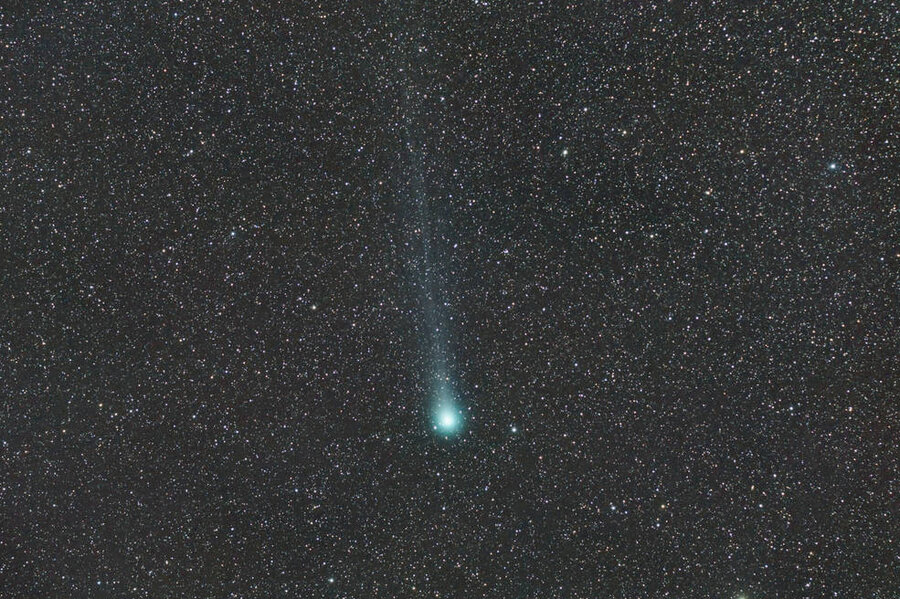What Comet Lovejoy can tell us about the origins of life on Earth
Loading...
For years the prevailing theory of how life originated on Earth was that, billions of years ago, our home was entirely barren. Then, comets, rich in organic molecules, crashed into the surface, fertilizing the planet.
And new research supporting this theory suggests that these early ingredients for life may have been much more complex than originally believed.
The new evidence comes courtesy of Comet Lovejoy, one of the brightest and most active comets in our solar system since comet Hale-Bopp made its closest approach to the sun in 1997. Astronomers watched Lovejoy as it reached its closest orbit to the sun in January. The close solar orbit is a prime moment to observe the comet since the heat from the sun heats the comet and releases many of the molecules frozen on its surface as gases into the atmosphere. The gases are then identifiable with a telescope.
An international team of researchers used the 100-foot-diameter radio telescope at Pico Veleta in Spain’s Sierra Nevada mountains to observe Loveyjoy’s atmosphere in January 2015. In a study detailing their observations, released last week, the scientists said they detected 21 different complex organic molecules in the comet’s atmosphere, including two – ethyl alcohol and the simple sugar glycolaldehyde – that had never been seen in a comet before.
This new research provides further evidence that, while Earth and the solar system's other rocky planets may have been born barren and lifeless, they were fertilized by comets carrying a diverse array of complex organic molecules.
"Even if Earth was born dry and depleted of volatile elements, complex organics formed further away may have been supplied in large amount via comet nuclei early," said Nicolas Biver, lead author of the study, in an email to Space.com. This "certainly contributed to the emergence of more-complex molecules and ultimately life."
Models suggest that in the solar system's early days the four biggest planets – Jupiter, Saturn, Uranus, and Neptune – migrated away from the sun, with the shifts in gravitational pull sending large numbers of comets streaming towards the rocky planets in the solar system's interior, including Earth and Mars. This period, which occurred about 3.8 billion years ago, is known as the Late Heavy Bombardment.
Stefanie Milam of NASA's Goddard Space Flight Center, a co-author of the study, said the result "definitely promotes the idea that comets carry very complex chemistry."
"Life didn't have to start with just simple molecules like water, carbon monoxide, and nitrogen. Instead, life had something that was much more sophisticated on a molecular level," she added in a NASA press release. "These [molecules] can start forming much easier than beginning with molecules with only two or three atoms."
Astronomer believe the comets absorbed the molecules from the ancient cloud of gas and dust in which the solar system formed billions of years ago, but the study authors say that where the molecules originally came from isn’t yet confirmed.
"The next step is to see if the organic material being found in comets came from the primordial cloud that formed the solar system or if it was created later on, inside the protoplanetary disk that surrounded the young sun," Dominique Bockelée-Morvan from the Paris Observatory, a co-author of the paper, said in the release.








